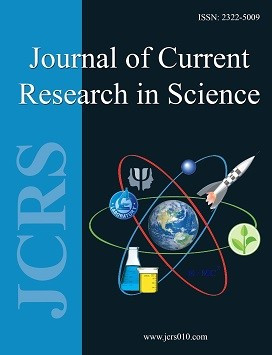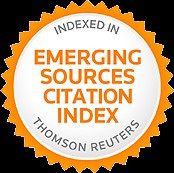

The Journal of Current Research in Science (JCRS) is included on my list of questionable journals, and I strongly advise all honest researchers to avoid it. It allows up to 40% plagiarism in its articles and proclaims several completely fake impact factors. Surprisingly, a new scholarly index from a reputable firm has made the decision to include this journal in its coverage.
High Tolerance for Plagiarism
A prominent note at the top of the journal’s website says:
“JCRS is following an instant policy on rejection those received papers with plagiarism rate of more than 40%.”


This means the journal will accept and publish papers with up to 40% unoriginal content, a highly-questionable practice that violates established scholarly publishing ethical norms.
Fake Impact Factors
The journal also displays false impact factors to make itself look more legitimate. It has made-up numbers from Global Impact Factor and Universal Impact Factor. These are counterfeit impact factor companies that sell their contrived metrics to predatory journals, metrics the journals use to attract papers.




The journal prominently displays the logo of the Emerging Sources Citation Index (ESCI), a new database from Thomson Reuters — the same company that calculates impact factors. I verified that the journal is included in this index.
ESCI is an attempt by Thomson Reuters to better compete with Scopus, which has a much broader coverage than Web of Science, Thomson Reuters’ main index.
If Emerging Sources Citation Index is including journals like the Journal of Current Research in Science — with its fake impact factors and high tolerance for plagiarism — then ESCI will have little value and will gain a reputation as a dirty database.
Non-Scientific Content
I also note the presence of out-of-scope content in the Journal of Current Research in Science, including, for example, the article “The Ratio of Islamic philosophy and religious thought.”
The article does not fall into the journal’s stated scope (current research in science) at all. Moreover, it, along with the journal’s other articles, has not been copyedited and contains numerous errors, such as “lunarcolander” instead of “lunar calendar.”
Conclusion
If this journal fits into Thomson Reuters’ idea of “emerging sources,” then I question the company’s competence in evaluating open-access journals. The journal misleads researchers with fake impact factors and permits a high level of plagiarism in its published articles.
Hat tip: Janusz Mierczynski
By: Jeffrey Beall
Follow on Twitter
Source: Scholarly Open Access
A proposal to build nearly 500 affordable housing units in Seattle’s Stadium District has ignited…
A powerful storm swept through Western Washington overnight, bringing heavy rain and strong winds that…
Seattle’s interim police chief, Sue Rahr, has terminated officer Kevin Dave following a city investigation…
Nathan Young has always had a heart for helping others. After college, Nathan decided to…
This month’s column was started during the first week of December while I was digesting…
This month, I have taken to sitting on the back deck with my morning coffee…